Morcom Rose Garden: Birding Hotspot
By Blake Edgar
In a sunken amphitheater between two of Oakland’s busiest boulevards, a pair of resident Wild Turkeys has been the most conspicuous avian attraction in recent months at the Morcom Rose Garden, delighting visitors as the tom persistently pursues his intended with a fully fanned tail. Turkeys also dominate the bird observations on iNaturalist from this location.
Roughly a mile from Lake Merritt, this hidden and often overlooked garden has surprises in store for beginning birders or those seeking to practice birding by ear in a place where it’s fairly easy to see who’s calling and singing.
The central area is a formal Florentine-style garden, but the surrounding slopes have mature scrub and woodland habitat. Some of the access involves stairways, with options for those who prefer level paths or gradual inclines.
And if the birds aren’t cooperating, there’s ample reward in stopping to smell the roses. With some rare heirloom varieties on display, this is considered one of the best public collections in the country and has been accredited as an All-American Rose Selection.
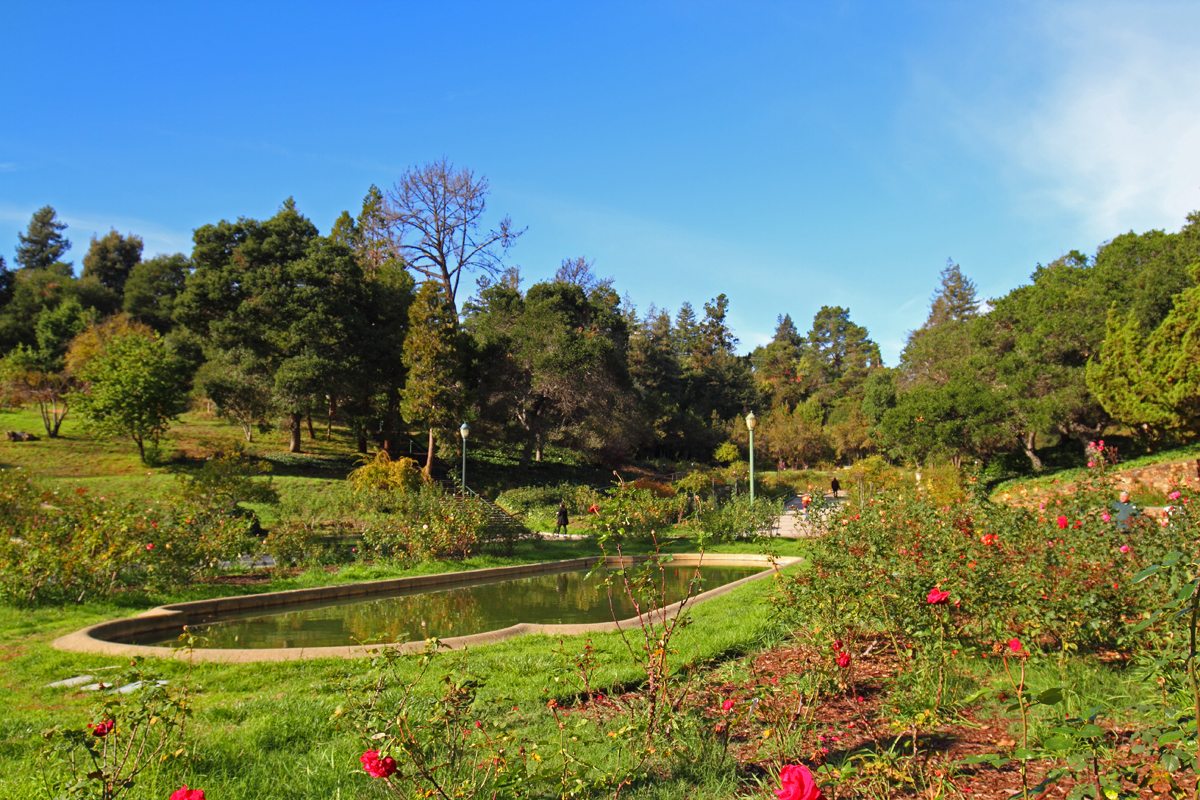
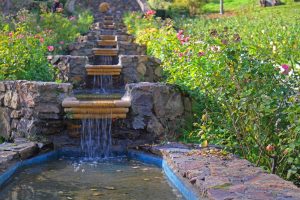
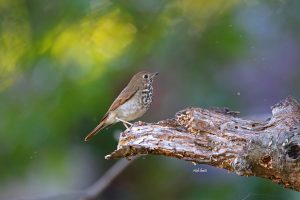
On land earmarked for open space in 1911, the garden was constructed in 1932 under the auspices of the Works Progress Administration and named for Oakland’s then-mayor Fred N. Morcom. The garden hosts an annual Earth Day cleanup event and the Oakland Mother of the Year ceremony and is a popular site for summer weddings and year-round personal training bootcamps. The Dedicated Deadheaders, a group of volunteers recognizable by their tie-dyed vests, spend two mornings each month helping the city’s park staff maintain the eight acres of rose beds.
Although parking is limited, the easiest access to the garden is from the south via Jean Street, just a block from bustling Grand Avenue. Past the colonnade, continue straight on a paved path among to the reflecting pool frequented by Mallards, or the cascading fountain that also serves as a fancy birdbath.
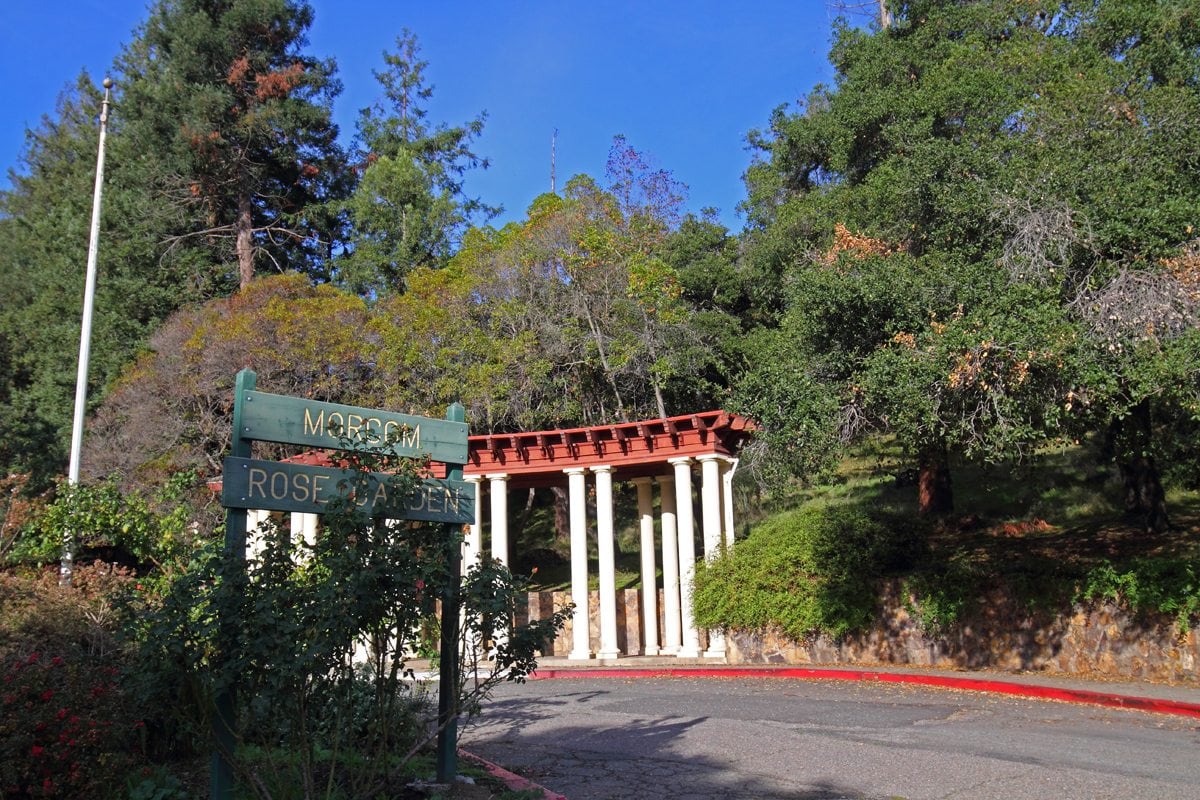
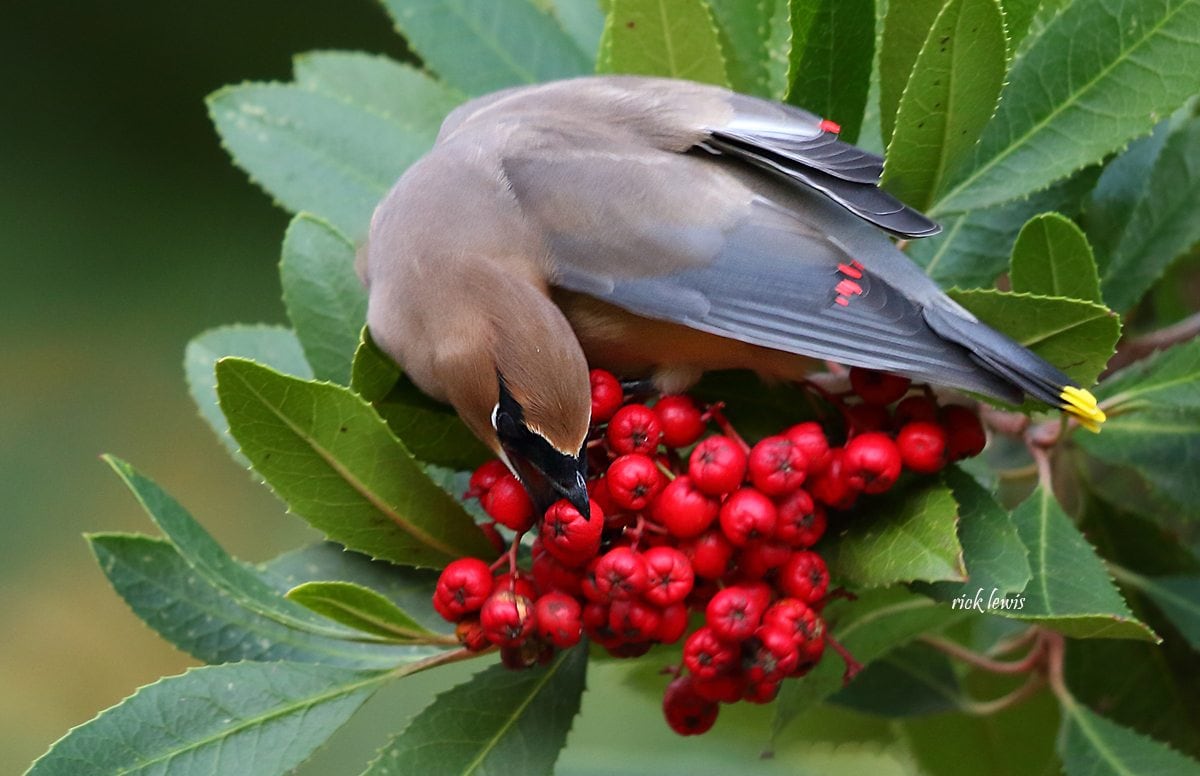
From here, head upslope on the east or west side of the amphitheater for better birding along one of the paved or dirt paths. Dominated by mature oaks, redwoods, and pines, the east side may provide a sighting of a Northern Flicker, a Cooper’s Hawk, or a Red-shouldered Hawk. Also keep an eye out for Ruby-crowned Kinglet, Bewick’s Wren, Oak Titmouse, and warblers. More common, though, are California Towhee scratching in the leaf litter and fox squirrels scrambling for acorns. In the more exposed trees adjacent to Olive Avenue, look for Red-breasted Nuthatch and Brown Creeper.
On the west side paths, you might encounter flocks of White- and Golden-crowned Sparrows drawn to the seed scattered daily by a visitor. This can also be a good area for spotting Black Phoebe, Mourning Dove, those roving turkeys, and still more squirrels. Don’t neglect scanning for birds from the path that passes through blackberry bushes and grassier habitat beneath the large apartment building. After dark, a Great Horned Owl often calls from high in a conifer in this section of the park.

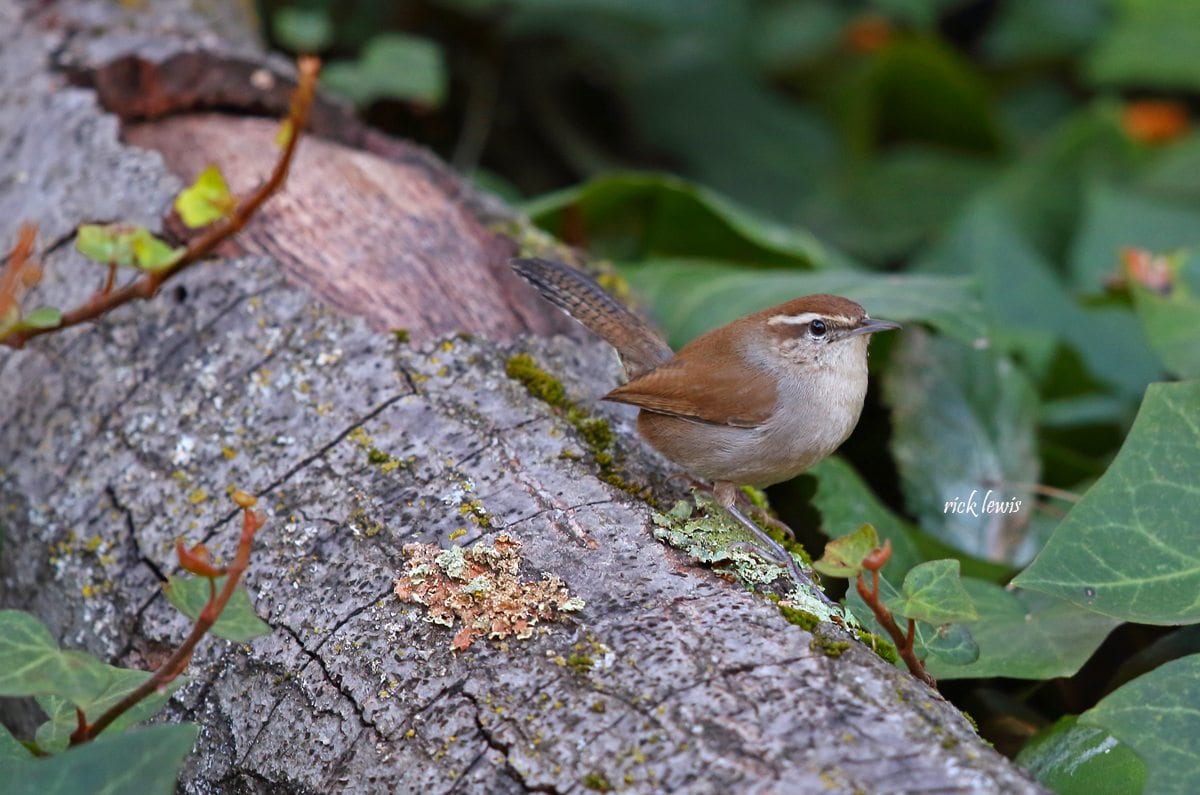

Corvid fans can expect to find Western Scrub-Jay, Steller’s Jay, and American Crow. Common Raven have nested near the top of the northeast stairway in recent years, and last spring a friend watched a raven flush a Cooper’s Hawk from its perch and chase it across the garden.
Along the Jean Street stairway that marks the garden’s southern edge, watch and listen for Anna’s Hummingbirds zipping between branch tips and nearby feeders. Both
Nuttall’s and Downy Woodpeckers can also be seen or heard here. According to a longtime resident of the area, California Quail and Spotted Towhee used to be seen frequently until underbrush was removed from the garden slopes.
Conveniently located between the more prominent birding sites of Lake Merritt and Mountain View Cemetary, Morcom Rose Garden is worth a visit.

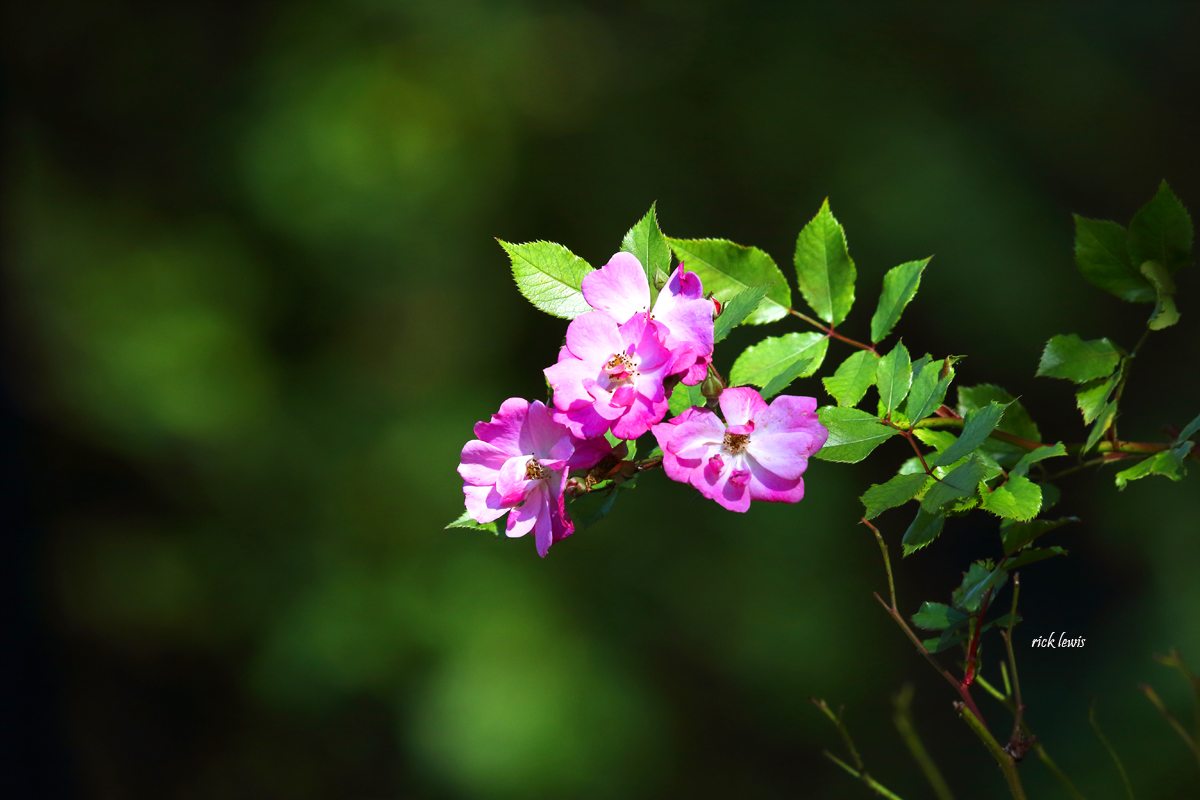
Fast Facts
Location: Morcom Rose Garden, 700 Jean Street, Oakland
Hours/Fees: Garden hours are 6:00 a.m. – 10:00 p.m. daily. Admission is free.
Dogs: Not allowed.
Habitat: Landscaped garden flanked by mature Coast Live Oak, Monterey Pine, Coast Redwood, and other trees.
Key Birds:
Year-round: American Crow, Anna’s Hummingbird, Bewick’s Wren, California Towhee, Cooper’s Hawk, Oak Titmouse, Wild Turkey
Winter: Golden-crowned Sparrow, Lesser Goldfinch, Red-breasted Nuthatch
Ease of Access: The garden has five entrances, including a primary (and wheelchair accessible) entrance on Jean Street, and others on Chetwood Street and on Monte Vista, Olive, and Oakland Avenues.
Getting There: The garden can be reached by three AC Transit bus lines: 12 from Grand Avenue and 33 or P from Oakland Avenue. Free street parking is available near each of the entrances but is most ample on Oakland Avenue and Olive Avenue.
Nearby Services: A handicapped accessible restroom and a water fountain are located near the Jean Street entrance.
Nearby cafés/restaurants: Grand and Piedmont Avenues have numerous restaurants and cafés within walking distance or a short drive from the garden.
For More information: friendsofoaklandrose.org
Blake Edgar is an avid naturalist and birder. An editor for U.C. Berkeley, Blake has written for Scientific American, Bay Nature, and other publications.
